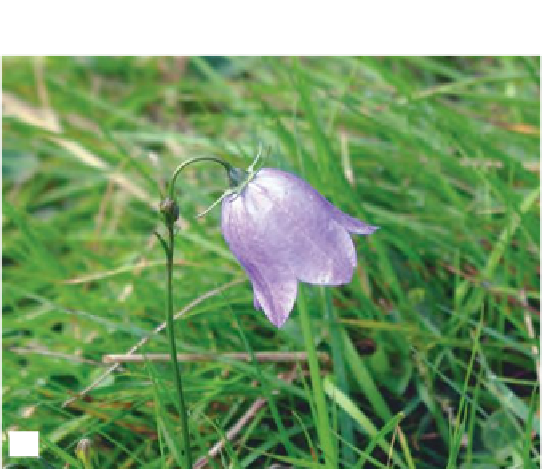Agriculture Reference
In-Depth Information
A
genus
is a group of individuals within a family
that have characteristics in common. A
species
is a group of individuals within a genus that
have characteristics in common and are able to
breed among themselves.
Plant names - the binomial system
and cultivars
The name given to a plant species is very important
and is the key to identification in the field or garden.
Botanical plant names are stable and unambiguous;
therefore their use avoids confusion. They are an
international form of identity used by researchers
and gardeners alike, in an internationally understood
language. Armed with the botanical name, information
on a specific plant can be sourced from topics and the
internet. A botanical name is required before breeders
can legally protect the new plants they have bred and
also means that the correct plant can be selected and
identified in planting schemes. When dealing with
medicinal plants and herbs, poisonous plants can be
avoided.
Common names that we use for plants, such as
daisy, potato and lettuce, are, of course, acceptable in
English, but are not universally used. Common names
may vary with location - for example,
Caltha palustris
ha
s
140 names in Germany, 60 in France and 90 local
names in Britain and Ireland including marsh marigold,
kingcups and Mayblobs (Figure 4.5).
Alternatively, the same common name can describe
several different species. Bluebell is the local name
for
Campanula rotundifolia
in Scotland,
Hyacinthoides
non-scripta
in England,
Wahlenbergia saxicola
in New
Zealand,
Clitoria ternata
in West Africa and
Phacelia
whitlavia
in the USA, none of which are related (Figure
4.6).
(a)
(b)
Figure 4.6
Two plants known as bluebells: (a)
Hyacinthoides non-scripta
(English bluebell); (b)
Campanula rotundifolia
(known as bluebell in Scotland
and harebell in England)
Common names may be in a variety of languages
and scripts and often plants are introduced without
a common name (e.g.
Camellia sinensis
) or with
one invented by the seller.
A scientific method of
naming plants therefore enables every plant to be
unambiguously identified with an accurate name that
is universally recognized.
The name can also provide information about a
species, such as its relationship with other species,
and can give clues about its origin, its preferred
habitat or its characteristics such as its colour, size or
form. See 'Plant Names' on the companion website.
Linnaeus utilized a naming system which included the
name of the genus to which a plant belonged followed
by its individual species name written in botanical
Latin. This is called a
binomial
after the two named
Figure 4.5
Caltha palustris




